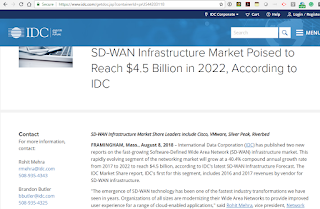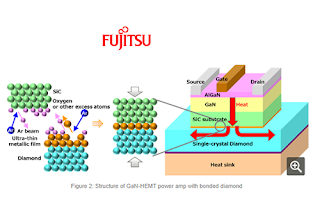China Tower, which had been pitched as the world's largest IPO - and not just for telecoms, drew lacklustre investor enthusiasm this week as its shares began trading on the Hong Kong Exchange. Trading opened on Wednesday at the bottom of the forecasted range at HK$1.26 and closed at exactly the same price. This raised HK$54.3 billion (US$6.9 billion) for China Tower, funds that will be much needed for the very capital intensive undertaking of preparing China's physical infrastructure for 5G.
The $6.9 billion IPO makes China Tower's listing one of the biggest in recent years, but far below the record US$25 billion that Alibaba raised in its IPO in New York four years ago.
In investor roadshow briefings last month, China Tower executives talked about raising as much as US$8.7 billion in the IPO. The pre-IPO chatter had also mentioned Alibaba as a cornerstone investor in China Tower, presumably bringing along with many other of the country's high-tech powerhouses. Joint bookrunners and lead managers for the IPO included a who's who in international finance: CICC, Goldman Sachs, J.P. Morgan, BNP Paribas, HSBC, UBS, etc.
With this pedigree, many will be wondering whether China Tower's tepid IPO reception is the result of fundamental questions about the company's business, or unfortunate timing during a period of trade tensions and market uncertainty.
Some background
China Tower is the Beijing-based infrastructure business that consolidated the tower operations of the country's three mobile operators: China Telecom, China Unicom, and the leader, China Mobile. As such, China's mobile communications infrastructure is literally in this company's hands.
As of March 31, 2018, China Tower operated and managed 1,886,454 sites and served 2,733,500 tenant equipment contracts from its investor/owners. This makes China Tower the number 1 tower company in the world in terms of sites, revenue, and contracts.
In terms of being a key component of the country's critical infrastructure, China Tower cannot fail or be disrupted in any financial or physical sense without harming the nation and its cyber ambitions. For this reason, it seems inconceivable that China Tower could be hindered by competition, legal disputes, or any lack of regulatory support in its mission. The prospectus for China Tower even states this as such:
"We are the world’s largest telecommunications tower infrastructure service provider with a commanding market position in the PRC. As the coordinator of the co-location of telecommunications tower infrastructure in the PRC, our site resources and services are essential and fundamental to the nationwide enhancement of 4G network and the future build-out of 5G network by China Mobile, China Unicom and China Telecom (the “Big Three TSPs”) in the PRC telecommunications market."
China Tower is present in all 31 provinces, municipalities and autonomous regions in the PRC, covering all cities and extensive rural areas. There are a few other, very minor tower companies in business, but it is safe to say that China Tower has the market pretty much wrapped up. Essentially, it is the dedicated utility in a rapidly expanding market.
In July's investor roadshow, China Tower estimated that 60% of the proceeds from the IPO would be dedicated to CAPEX for building new towers and upgrading existing ones. Under this plan, the now completed IPO yields a CAPEX budget of US$4.14 billion for the infrastructure program and US$2.76 billion for debt relief.
China Tower's balance sheets lists current liabilities of 96.4 billion yuan (US$14.17 billion) and non-current liabilities of 48.2 billion yuan (US$7.08 billion). The budget for 2018 apparently is $34 billion
The CAPEX budget will be tight for 5G
China Tower has disclosed capital expenditures of 229 billion yuan (US$33.7 billion) for 2015, 64.1 billion yuan for 2016 (US$9.42 billion), and 43.8 billion yuan (US$6.43 billion) for 2017. The CAPEX trend clearly has been declining at a rapid pace over the recent years, reflecting the rapid 4G rollouts in China, which have significantly been completed.
The IPO money dedicated to CAPEX (US$4.14 billion) will be a big boost compared to 2018 spending, but nowhere near the banner year of 2015. The big questions will be "is it enough" given China's size and its goal to be a leader in 5G, as well as the ongoing maintenance that is always needed to keep equipment in good order, including moves/adds/changes, dealing with fiber cuts, fixing air conditioners, installing new sensors, testing, security, responding to outages, etc.
China Tower operates macro cell sites, small cells, and DAS installations. As of June 30, 2018, China Tower operated and managed 1,878,739 macro tower sites and 19,400 DAS sites. The overall tenancy ratio was 1.47 and the tenancy ratio of the TSP tenants for ground tower sites in operation was 1.54.
On the positive side, China's 4G rollout specified fibre to the tower in most installations. This implies that the majority of those 1.9 million sites currently in operation should be easily upgradeable for the additional backhaul needed for 5G. If so, a lot of the future CAPEX could go toward network densification, especially small cells.
China Tower is profitable when CAPEX is low

As mobile data usage continues to climb with no end in sight, China Tower will need to keep building. Its existing customers have nowhere else to go, so it is a pretty certain bet that China Tower will keep on expanding.
As far as delivering a desirable return to investors, the business model comes with one big caveat. The prices that China Tower charges for allowing mobile operators to use its infrastructure is set by the customer/investors themselves. In other words, China Mobile, China Telecom and China Unicom set the common price they are willing to pay to their former infrastructure arms.
The $6.9 billion IPO makes China Tower's listing one of the biggest in recent years, but far below the record US$25 billion that Alibaba raised in its IPO in New York four years ago.
In investor roadshow briefings last month, China Tower executives talked about raising as much as US$8.7 billion in the IPO. The pre-IPO chatter had also mentioned Alibaba as a cornerstone investor in China Tower, presumably bringing along with many other of the country's high-tech powerhouses. Joint bookrunners and lead managers for the IPO included a who's who in international finance: CICC, Goldman Sachs, J.P. Morgan, BNP Paribas, HSBC, UBS, etc.
With this pedigree, many will be wondering whether China Tower's tepid IPO reception is the result of fundamental questions about the company's business, or unfortunate timing during a period of trade tensions and market uncertainty.
Some background
China Tower is the Beijing-based infrastructure business that consolidated the tower operations of the country's three mobile operators: China Telecom, China Unicom, and the leader, China Mobile. As such, China's mobile communications infrastructure is literally in this company's hands.
As of March 31, 2018, China Tower operated and managed 1,886,454 sites and served 2,733,500 tenant equipment contracts from its investor/owners. This makes China Tower the number 1 tower company in the world in terms of sites, revenue, and contracts.
In terms of being a key component of the country's critical infrastructure, China Tower cannot fail or be disrupted in any financial or physical sense without harming the nation and its cyber ambitions. For this reason, it seems inconceivable that China Tower could be hindered by competition, legal disputes, or any lack of regulatory support in its mission. The prospectus for China Tower even states this as such:
"We are the world’s largest telecommunications tower infrastructure service provider with a commanding market position in the PRC. As the coordinator of the co-location of telecommunications tower infrastructure in the PRC, our site resources and services are essential and fundamental to the nationwide enhancement of 4G network and the future build-out of 5G network by China Mobile, China Unicom and China Telecom (the “Big Three TSPs”) in the PRC telecommunications market."
China Tower is present in all 31 provinces, municipalities and autonomous regions in the PRC, covering all cities and extensive rural areas. There are a few other, very minor tower companies in business, but it is safe to say that China Tower has the market pretty much wrapped up. Essentially, it is the dedicated utility in a rapidly expanding market.
In July's investor roadshow, China Tower estimated that 60% of the proceeds from the IPO would be dedicated to CAPEX for building new towers and upgrading existing ones. Under this plan, the now completed IPO yields a CAPEX budget of US$4.14 billion for the infrastructure program and US$2.76 billion for debt relief.
China Tower's balance sheets lists current liabilities of 96.4 billion yuan (US$14.17 billion) and non-current liabilities of 48.2 billion yuan (US$7.08 billion). The budget for 2018 apparently is $34 billion
The CAPEX budget will be tight for 5G
China Tower has disclosed capital expenditures of 229 billion yuan (US$33.7 billion) for 2015, 64.1 billion yuan for 2016 (US$9.42 billion), and 43.8 billion yuan (US$6.43 billion) for 2017. The CAPEX trend clearly has been declining at a rapid pace over the recent years, reflecting the rapid 4G rollouts in China, which have significantly been completed.
The IPO money dedicated to CAPEX (US$4.14 billion) will be a big boost compared to 2018 spending, but nowhere near the banner year of 2015. The big questions will be "is it enough" given China's size and its goal to be a leader in 5G, as well as the ongoing maintenance that is always needed to keep equipment in good order, including moves/adds/changes, dealing with fiber cuts, fixing air conditioners, installing new sensors, testing, security, responding to outages, etc.
China Tower operates macro cell sites, small cells, and DAS installations. As of June 30, 2018, China Tower operated and managed 1,878,739 macro tower sites and 19,400 DAS sites. The overall tenancy ratio was 1.47 and the tenancy ratio of the TSP tenants for ground tower sites in operation was 1.54.
On the positive side, China's 4G rollout specified fibre to the tower in most installations. This implies that the majority of those 1.9 million sites currently in operation should be easily upgradeable for the additional backhaul needed for 5G. If so, a lot of the future CAPEX could go toward network densification, especially small cells.
China Tower is profitable when CAPEX is low

As mobile data usage continues to climb with no end in sight, China Tower will need to keep building. Its existing customers have nowhere else to go, so it is a pretty certain bet that China Tower will keep on expanding.
As far as delivering a desirable return to investors, the business model comes with one big caveat. The prices that China Tower charges for allowing mobile operators to use its infrastructure is set by the customer/investors themselves. In other words, China Mobile, China Telecom and China Unicom set the common price they are willing to pay to their former infrastructure arms.























